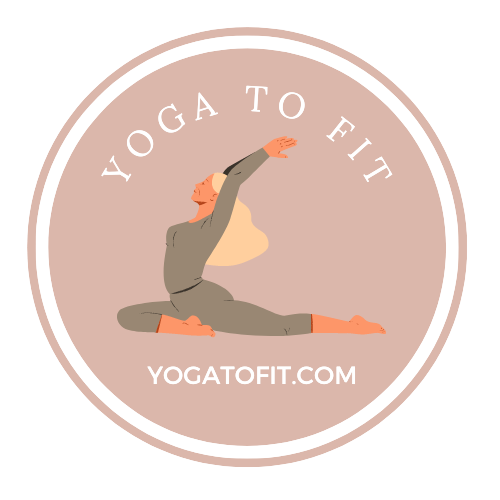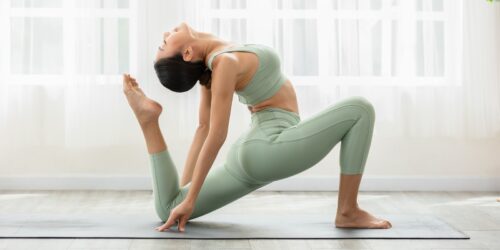Yoga Strap: Benefits And Uses

Yoga often needs few items, but props like blocks, blankets, and yoga straps can enhance your practice. A yoga strap is versatile and aids in deeper stretches and poses. If you lack a yoga strap, alternatives like scarves or belts can suffice, just ensure they aren’t stretchy like resistance bands.
This article delves into the benefits and uses of yoga straps.
What is a yoga strap?
A yoga strap is a long, flexible band typically made of nylon or cotton. It’s used to enhance yoga poses by providing support, stability, and assistance in achieving deeper stretches. Straps come in various lengths and often have a buckle or D-ring to adjust the size for different poses and body types.
Benefits of Using a Yoga Strap:
Using a yoga strap offers several benefits:
- Improved Flexibility: Straps help you gradually ease into stretches, allowing you to reach further and hold poses comfortably.
- Enhanced Alignment: Straps assist in maintaining proper alignment by providing support where needed, reducing the risk of injury.
- Deeper Stretching: They allow you to deepen stretches by extending your reach, even if you’re not yet able to touch your toes or grasp your hands behind your back.
- Accessible Modifications: Straps make poses more accessible for beginners, individuals with limited flexibility, or those recovering from injuries, enabling them to experience the benefits of yoga safely.
- Increased Stability: Straps aid in maintaining balance and stability in challenging poses, allowing you to focus on alignment and breath control.
- Versatile Use: Besides stretching, yoga straps can be utilized for strengthening exercises, alignment corrections, and even as a makeshift yoga mat strap or sling.
Incorporating a yoga strap into your practice can enhance your overall yoga experience, making poses more accessible and enjoyable while promoting flexibility and alignment.
How to Use a Yoga Strap?
Choose the Right Strap: Yoga straps are typically made of cotton, nylon, or hemp. Opt for a strap with a comfortable width and length. A standard strap is around six feet long, but longer ones are available for individuals with greater flexibility or taller.
Add Strapping to Your Practise: Hold the strap firmly in both hands while maintaining a shoulder-width distance between your arms. As necessary, alter the length.
Extension and Support: Use the strap to extend your reach in standing or seated forward bends, reaching for your feet or ankles. Wrap the strap around the foot and hold the ends to increase the stretch.
Alignment Assistance: Loop the strap around the upper arms during downward-facing dog or plank pose to maintain proper alignment and engage the shoulder muscles.
Binding Poses: For poses requiring binding, such as seated twists or eagle pose, use the strap to connect the hands when the flexibility is limited.
Strap-Assisted Yoga asanas
Yoga is a form of exercise that combines breathing exercises, physical postures, and meditation to improve general health. To fully benefit from some yoga asanas, our bodies may occasionally need a little more help or support. Yoga with straps can be used to address this.
Some Strap-Assisted Yoga asanas are:
Strap-Assisted Forward Fold: Place the strap around the balls of your feet and hold onto the strap with both hands. Slowly fold forward, keeping your spine straight and extending through the crown of your head.
Strap-Assisted Shoulder Opener: Hold the strap with both hands behind your back, wider than shoulder-width apart. Gently pull the strap upwards, allowing your shoulders to open and your chest to lift.
Strap-Assisted Cow Face Pose: Hold the strap with both hands behind your back. Bring one arm overhead and the other behind your back, trying to clasp your hands. If your hands don’t meet, use the strap to bridge the gap.
Strap-Assisted Bridge Pose: Lie on your back with your knees bent and feet flat on the floor. Place the strap around your thighs, just above your knees. Press your feet into the ground, engage your glutes, and lift your hips off the mat.
Strap-Assisted Pigeon Pose: Start with your right leg forward in a low lunge position. Wrap the strap around the back of your foot and grasp it firmly with both hands. Utilising the strap to maintain your balance, slowly drop your chest towards your front leg.
FAQS
Q1: Are yoga straps only for beginners?
A: No, yoga straps can benefit practitioners of all levels. They offer support and allow for deeper stretches and variations, making challenging poses accessible to both beginners and advanced practitioners.
Q2: Can I use a belt or a scarf as a substitute for a yoga strap?
A: While belts or scarves might be used as makeshift options, they lack the durability and stability of a dedicated yoga strap. It is recommended to invest in a proper yoga strap for optimal results and safety.
Q3: How do I clean my yoga strap?
A: Most straps can be hand-washed with mild soap and water. Follow the manufacturer’s instructions to ensure the longevity of your strap.
You May Also Like:



